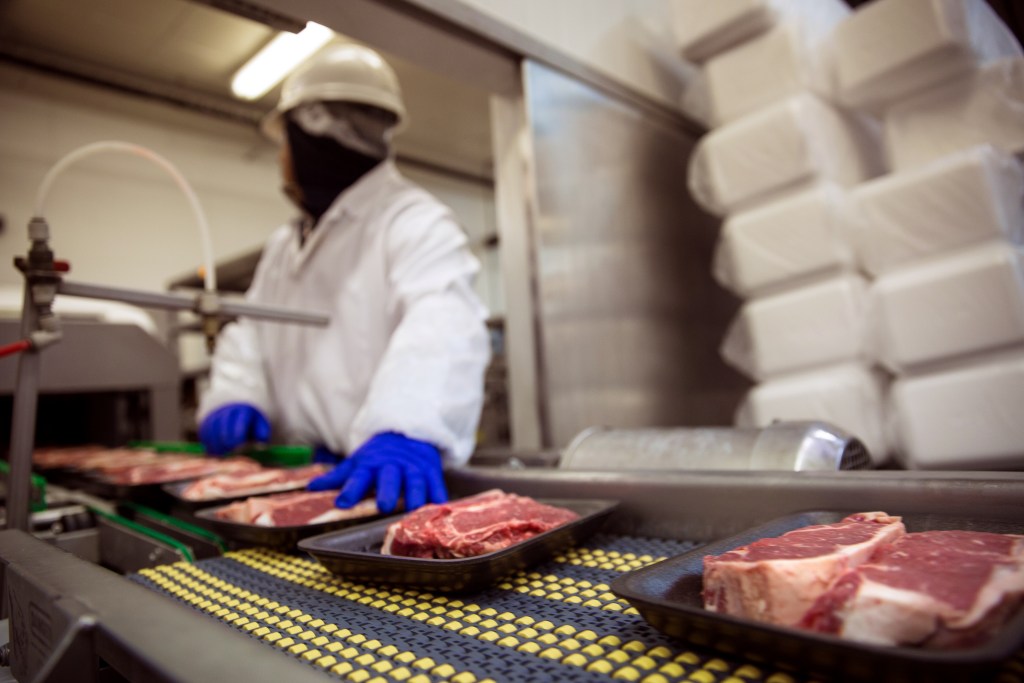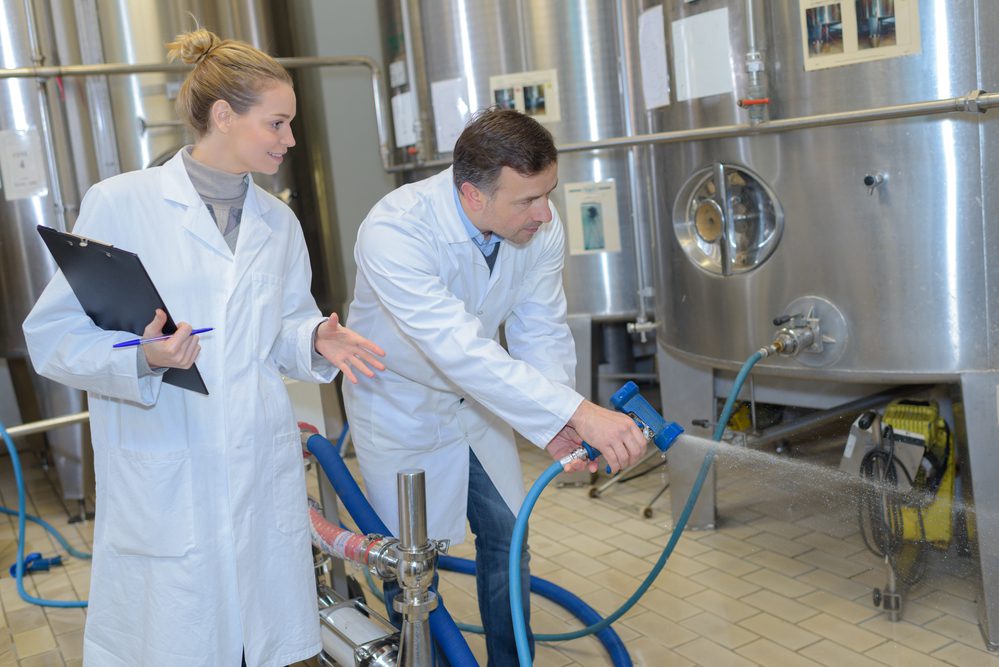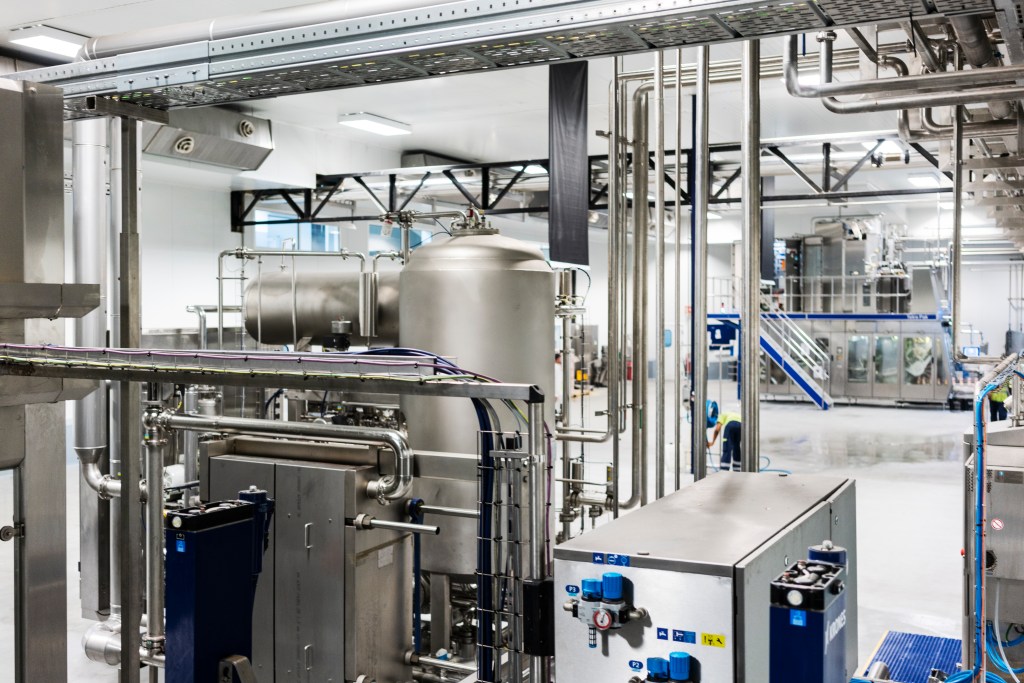Biofilm is a major nuisance to food processing plants across the country.
The topic of biofilm, particularly how to eliminate and avoid it, is a key focal point for those in production plants, sanitation, and food safety and quality assurance departments.
Why, you might be wondering? It’s because a biofilm formation can be extremely challenging to eliminate.
But, just because biofilm is difficult to deal with, that doesn’t mean it’s impossible to prevent or remove.
This article will simplify the complex topic of biofilm and recommend the best method for biofilm removal.
What is Biofilm?
In simple terms, biofilm is a complex structure of illness-causing bacteria and other microorganisms that have the power to contaminate food or food packaging, shut down a production line, cause mass recalls, significantly damage profits, and tarnish a brand’s reputation.
Biofilm can develop in different ways depending on what bacteria it’s made up of. For example, listeria monocytogenes, e-coli, and salmonella create their own biofilm that develops very quickly and causes a range of antibiotic-resistant illnesses.
The process of removing biofilm is often difficult and time-consuming.
That’s because biofilm forms a protective barrier that is highly resistant to traditional cleaning and antibacterial chemicals. The protective barrier is able to shield the bacteria and microorganisms from most cleaning, rinsing, and scrubbing measures.
However, it’s absolutely necessary for the health and safety of any commercial environment, especially a food processing plant, to make sure all traces of biofilm are eliminated as soon as they’re identified.
How to Identify Biofilm
Depending on the facility and its internal logistics with production lines, the food safety or quality assurance team will need to develop a hazard analysis critical control points, or HACCP, plan in order to uncover biofilm formations.

The HACCP plan will identify critical control points, which are areas and surfaces that pose a greater potential for the growth of biofilms and harmful bacteria, and create a master sanitation schedule that outlines the frequency of, and specific instructions on how to perform, their sanitation efforts.
The routine should include effective cleaning chemistry, thorough agitation, adequate rinsing, and a proper sanitizing treatment that uses food contact sanitizers registered by the Environmental Protection Agency.
How to Kill Biofilm
Biofilm is resistant to common disinfectants, detergents, and sanitizers, making it a challenge to eliminate.
That’s why it’s absolutely necessary for you to use the right products and procedures, which is where the T.A.C.T. procedure comes in.
T.A.C.T. stands for temperature, agitation, chemistry, and time. It’s a systematic approach to cleaning that combines these four vital elements in order to give you the highest chance of success.
Let’s go over what each step means.
Temperature
This refers to the temperature of the water, chemicals, or cleaning solution that you’re using.
Temperatures should be optimized for what you’re cleaning. That means using high temperatures for cleaning and sanitizing, as high temperatures are effective at removing dirt, soil, and other residue.
Of course, that doesn’t just mean default to the highest possible temperature. Depending on the surface or material you’re cleaning, if the water is too hot, it can cause cosmetic or structural damage.
Always check the manufacturer’s label on the cleaning product for recommended temperatures.
Agitation
Agitation is a necessary step in most comprehensive cleaning plans. It’s the mechanical action of breaking down dirt and grime by thoroughly scrubbing.
Variables to take into consideration with agitation include the weight of the tool or machine (or the amount of pressure you’re using if agitating by hand) and the texture of the material you’re scrubbing with.
For example, there are dozens of different types of floor pads with varying degrees of roughness, each one with a particular purpose. You wouldn’t want to use a red floor pad when you were supposed to use a white pad, as chances are it would severely scuff the surface.
The same principles apply to agitation. You want to make sure you’re using the right scrub and the right amount of force for the job, no more, no less.
Chemical
Sometimes referred to as concentration rather than chemical, this variable encourages you to make sure that you’re choosing the correct chemical and that it is being used according to the
manufacturer’s instructions.
Primarily, that means following the directions on the label regarding both temperature and dilution.
Properly diluting a chemical solution is key in cleaning up any mess. Too little chemical and you’ll find that the solution is ineffective. Too many chemicals might cause damage to the surface you’re cleaning.
The same goes for temperature. Too cold or too hot, and the solution will not be as effective.
Time
Time, in this context, is short for contact time. Contact time is the amount of time that you let a chemical solution sit before cleaning or rinsing it.
In order for contact time to be effective, the concentration and the temperature of your cleaning solution have to be optimized. The balance between temperature, concentration, and time is a good representation of how important optimization is for T.A.C.T.
So, how can we apply all of these variables to help eliminate biofilm?
Steps for Biofilm Removal
Step 1: Pre-Clean the Affected Surface Area

The first step for biofilm removal, as with most cleaning procedures, is to pre-clean the area you’re treating. This will rid the surface of extra dirt and grime, allowing your solution to focus on the task at hand.
Step 2: Prepare the Chemical Solution
T.A.C.T. Step: Temperature & Chemical
Then prepare your chlorinated alkaline cleaner with hot water according to the manufacturer’s instructions.
You should also make sure that the hot water you use is no less than 110 degrees Fahrenheit. This is both for maximum efficacy and also to adhere to food safety regulations.
Our chemical experts have found a mixture of chlorinated alkaline cleaner and hot water to be ideal because it contains surfactants that will help penetrate and break down the biofilm formation.
Step 3: Allow for Contact Time
T.A.C.T. Step: Time

Once applied to the affected area, allow the solution to sit for a minimum of ten minutes. If you can, aim for 15 minutes or more.
By allowing the solution to sit for over fifteen minutes, you’re giving it a better chance at penetrating the biofilm’s protective barrier to eliminate harmful microorganisms.
The longer you’re able to let the solution sit, the more time it has to work its magic. Be careful not to let the solution dry, as then you’ll have to clean it from the surface and start over.
Step 4: Scrub the Surface Area
T.A.C.T. Step: Agitation
After the solution has had time to sit, it’s time to aggressively agitate the surface with a brush or scrubbing pad that has been approved for use in food operations and on food equipment.
Step 5: Rinse the Affected Surface Area
Finally, thoroughly rinse all surfaces with clean water. After rinsing, all you have to do is let the area dry and it can be opened up again.
Final Thoughts
Biofilm formation and removal continue to be important topics at the forefront of sanitization efforts in the food service industry.
While there are a number of different solutions and application methods that can be used for biofilm removal, we recommend using a solution of hot water and a chlorinated alkaline cleaner as the best way to treat equipment and flooring.
If you need help identifying areas affected by biofilm formation, or areas at risk for biofilm growth, reach out to an Imperial Dade facility near you. One of our chemical specialists will set up free onsite or virtual consultation, and help you with your biofilm removal needs.
